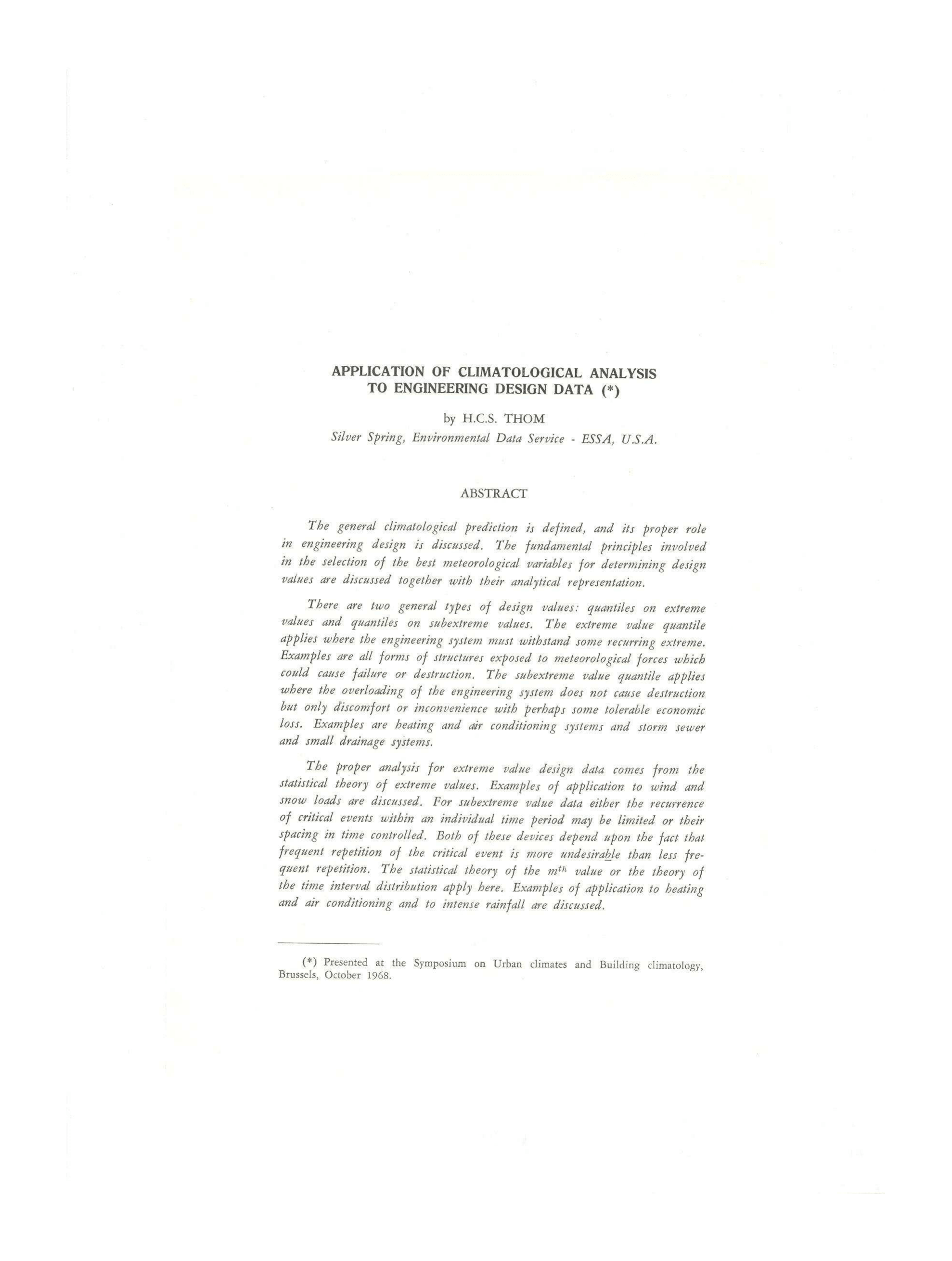Application of climatological analysis to engineering design data
Abstract
The general climatological prediction is defined, and its proper role in engineering design is discussed. The fundamental principles involved in the selection of the best meteorological variables for determining design values are discussed together with their analytical representation.
There are two general types of design values: quantiles on extreme values and quantiles on sub extreme values. The extreme value quantile applies where the engineering system must withstand some recurring extreme. Examples are all forms of structures exposed to meteorological forces which could cause failure or destruction, the sub extreme value quantile applies where the overloading of the engineering system does not cause destruction but only discomfort or inconvenience with perhaps some tolerable economic loss. Examples are heating and air conditioning systems and storm sewer and small drainage systems.
The proper analysis for extreme value design data comes from the statistical theory of extreme values. Examples of application to wind and snow loads are discussed. For sub extreme value data either the recurrence of critical events within an individual time period may be limited or their Spacing in time controlled. Both of these devices depend upon the fact that frequent repetition of the critical event is more undesirable than less frequent repetition. The statistical theory of the mth value or the theory of the time interval distribution apply here. Examples of application to heating and air conditioning and to intense rainfall are discussed.


